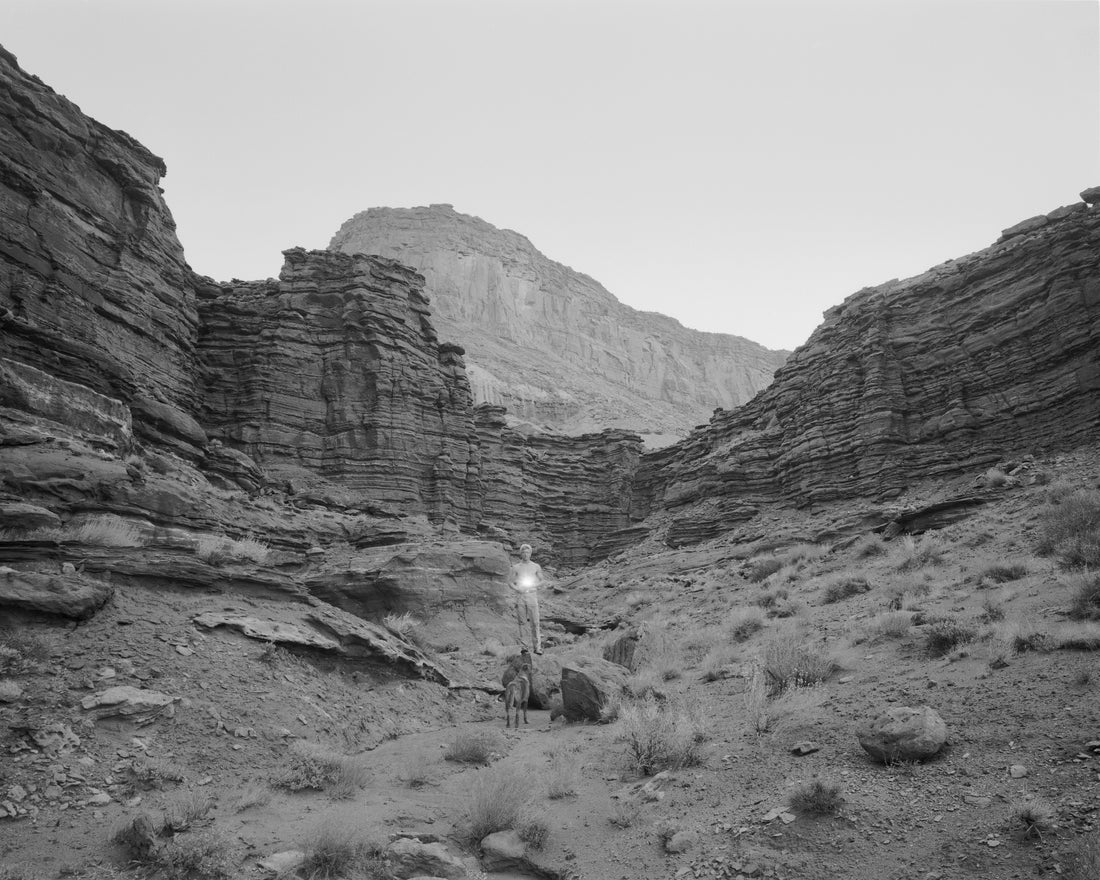
Ant walking with Michael Lundgren
Michael Lundgren has spent years making photographs that move between what is in front of us and what feels just out of reach. His images come from deserts, mountains, and other places where the world feels both very old and very present. They ask us to notice what lasts and what disappears, what the earth remembers and what it lets go.
We spoke with Lundgren his new book, Glass Mountain, on how his work begins, what draws him back to the wilderness, and what he hopes stays with a reader after turning the last page.

S/B: What first drew you into photography? Was there a moment when you realised it could become more than just a passing interest?
ML: Before I identified with photography, I was a skateboarder and I recall looking at the world around me for what could be done with a skateboard. I suppose there’s a corresponding photographic formalism in that. And then my Dad gave me my first camera when I turned 12––he said, ‘This camera can turn the night into the day.” What could that mean?
S/B: Much of your work feels rooted in landscapes and the wilderness. What is it that pulls you back to these wilder places?
ML: The unknown? Or perhaps it feels like coming home. Many of my trips into wilder places involve a long drive and I often arrive at my first camp long after dark. Step out of the truck, shut the door and a whole new world is there. Stars lasering through you, the sound of ants walking, leaves moving, nothing grand and everything grand. And everything you’ve been holding on to vanishes out the top of your head.

S/B: Your images often feel as if they’re glimpses of another world. If someone were to stumble across the same subjects you photograph, would they recognise them in your images?
ML: Some of these images are elaborate creations out there, objects tossed, multiple exposures, pools of water spun into being, comets gracing the sky yet they are all very specific. Of course you’d have to be paying attention to the world to find them. I have gone back at times to remote places and found the same subject. The desert is good for this. As my brother Erick once said, “The desert remembers, the forest forgets.”
S/B: How does a body of work begin for you? At what point do you start thinking about turning your images into a book?
ML: I got the book bug after my first one was published. Thousands of people could see these pictures? They will always be out there circulating long after I’m gone? But at first the work must begin with individual pictures, like thoughts jotted down in a notebook while waiting for the train. And then they coalesce. They lead to different pictures and a body begins to form. It is all one long arc. The grand themes carry through the books. I would be crestfallen if this was the last one.

S/B: When a reader spends time with this new book, what do you hope they carry with them afterwards?
ML: Am I the dreamer or the dream?
